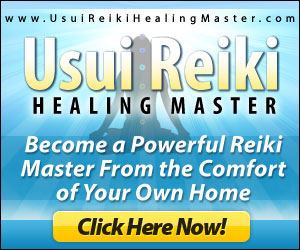Types of Reiki

Today there are many schools-branches of Reiki, however there are two main systems called Traditional and Non-Traditional, Western Reiki.
Traditional Reiki is practiced and taught at the society founded by Dr. Mikao Usui in 1925, the Usui Reiki Ryoho Gakkai. From there traditional Reiki takes its name – Usui Reiki Ryoho. To become a student of the society, one has to be invited by a sponsor. Potential student has to dedicate him/herself for years-lasting engagement. One has to be internally ready to give up his/her lifestyle for Bhuddist-like spiritual practice involving meditation, contemplation and a healthy lifestyle.
After receiving an attunement and teachings at each meeting the student begins to practice treatment under supervision of the sponsor or experienced teacher. With the first Reiki attunement, the student learns only five Reiki hand positions that are used on a head. As the student becomes more experienced and more sensitive to subtle energies, he/she is taught methods of diagnosing the body for signs of energy blockages, clots, and symptoms of weaknesses or dis-eases. Later on the student learns what intuition is and how to use it. In Traditional Reiki there is strong accent on intuitive guidance for hands placement during treatment (as opposed to Western tradition where hands’ positions are rather formalized). These healing skills, gradually learned over years, constitute the Shoden (the entrance) equivalent to level I in the Western tradition, the Okuden (the deep inside) and the Shinpiden (the mystery) equivalents of levels II and III.
The long-term nature of teachings allows students in the Gakkai to learn more techniques of Reiki Healing practice than in a Western class, including different meditation techniques used by Dr. Usui. Due to long term in practice students of the Gakkai have the opportunity to study more detailed and accurate.
In 1930, Hawayo Takata from Hawaii arrived to Japan asking Dr. Hayashi for treatment. Soon after she was treated, Takata found that Reiki is her way of life. She convinced Dr. Hayashi to be attuned to the Master level so that she could bring Reiki back with her to Hawaii. Eventually, Dr. Hayashi agreed and Takata began teaching Reiki in North America. This is where and when Western, so called Non-Traditional Reiki began. Takata used formalized attunements to initiate her students. She standardized hand positions for Reiki Healers.
Western Reiki schools allow student to be initiated – attuned relatively quickly, usually within a weekend or even one-day workshop. This method relies on formalized attunements, which are repeated number of times for each level of training – four attunements for level I, the basic hands-on healing course; two or three for level II, the distant healing course; and one for level III, the master or teacher training course.
Because many Traditional Usui Reiki Masters do not recognize the new Western methods of teaching Reiki Healing energy, Usui Reiki Masters are dropping the word “traditional” from the title of their courses, coming up with new names for the Reiki system based on traditional teachings.
Continue to learn more about how you can become a powerful reiki healer yourself ……